Are you trying to make sense of the ever-shifting values in the global currency market? Do you feel like the strength of the US dollar is a puzzle you can’t quite solve? The DXY Index, also known as the US Dollar Index definition, offers a powerful lens through which to view the might of the American currency. Think of it as the definitive scorecard for the greenback, meticulously measuring its performance against a carefully selected group of six major international currencies. This essential benchmark is more than just a number; it’s a critical tool for everyone from seasoned forex trading broker users navigating the complexities of what is DXY in forex, to international businesses strategizing their next move, and even casual observers keen to understand the global economic landscape. This in-depth article will dissect the intricacies of the DXY Index, unraveling its history, examining its core DXY Index components, deciphering its calculation, and highlighting its profound significance in the global financial ecosystem. We’ll guide you through understanding what is us dollar index and its implications for your financial decisions.
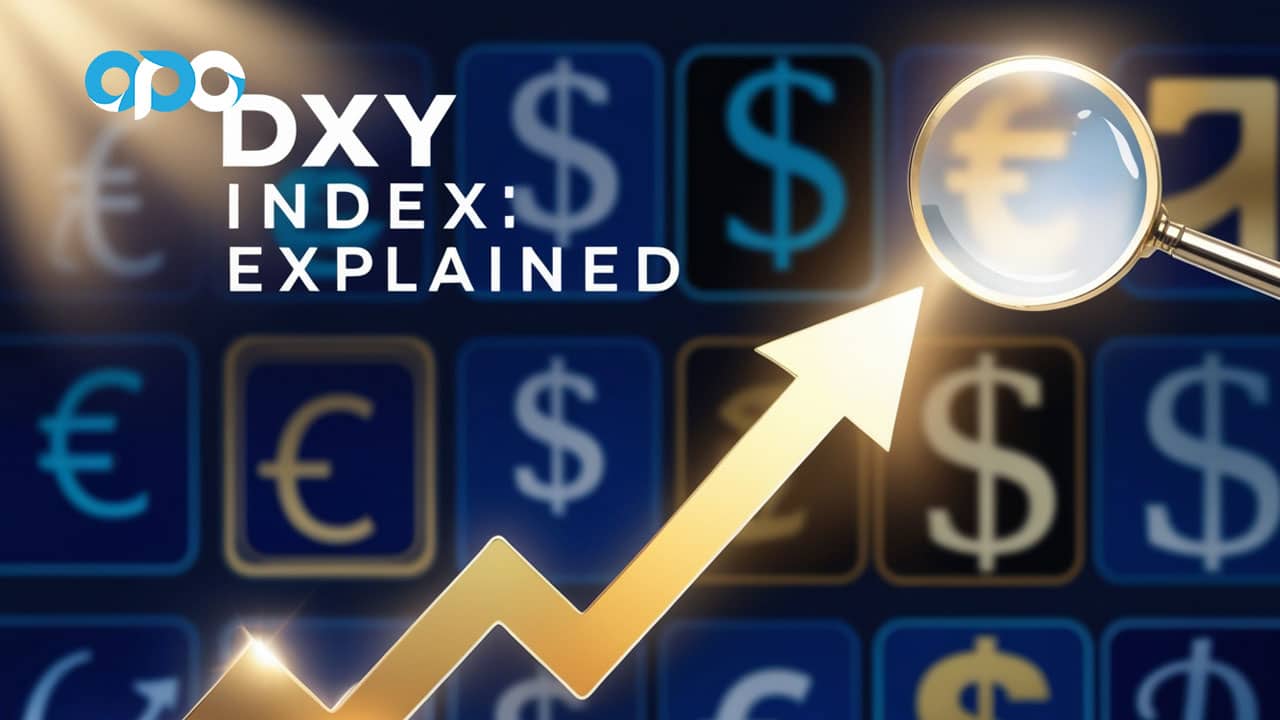
Unlocking the Secrets: What Exactly is the DXY Index?
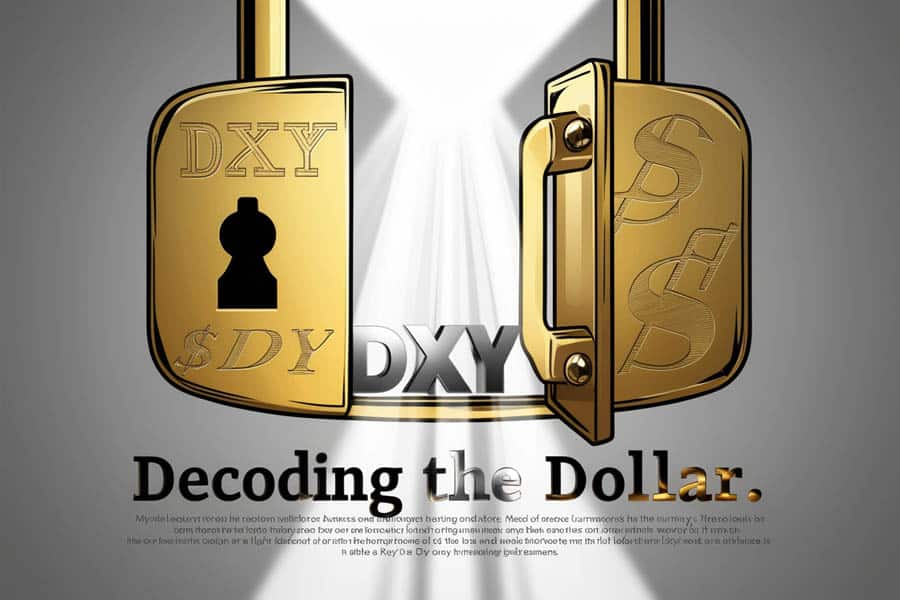
At its heart, the DXY Index serves as a barometer, reflecting the overall international value of the U.S. dollar. It’s a meticulously constructed metric, representing the weighted geometric average of the dollar’s exchange rate relative to a specific basket of six prominent foreign currencies. In simpler terms, this single, dynamic number encapsulates whether the dollar is generally gaining or losing strength compared to its major global counterparts. Grasping the essence of the DXY Index is paramount for anyone seeking to navigate the often-turbulent waters of global finance and understand the broader economic currents at play. Whether you’re actively trading with an online forex broker or simply following economic news, the DXY offers a valuable perspective.
Genesis of a Benchmark: The History and Background of the DXY Index
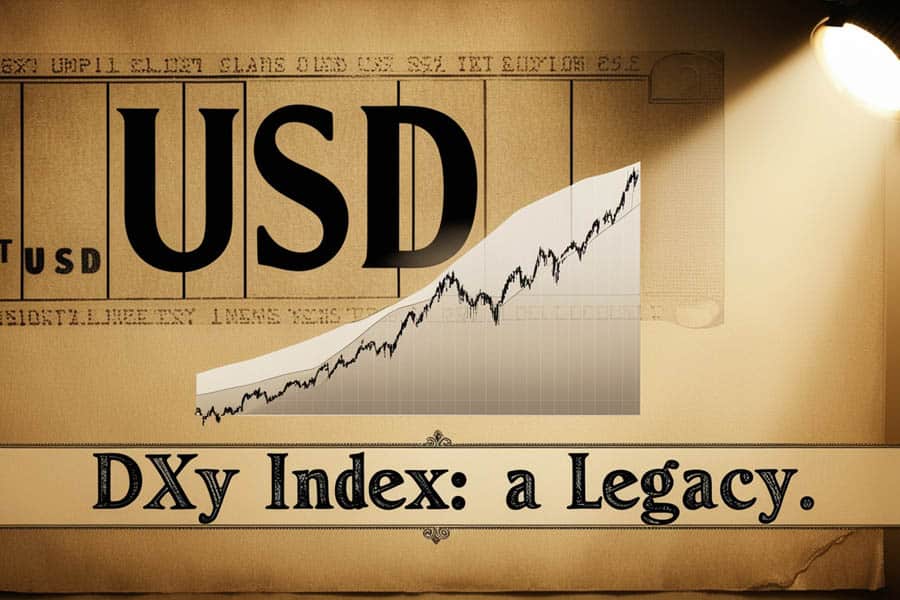
The story of the DXY Index begins in a period of significant transformation in the global monetary system – the year 1973. Born from necessity, its creation was a direct response to the dismantling of the Bretton Woods Agreement. This landmark agreement had established a system of fixed exchange rates, pegging various currencies to the U.S. dollar, which in turn was convertible to gold. When this system collapsed in the early 1970s, the world transitioned to a system of floating exchange rates, where currency values were determined by market forces.
Recognizing the need for a reliable measure of the dollar’s performance in this new environment, the U.S. Federal Reserve initially conceived and maintained the DXY Index. Its original purpose was to provide an objective and external benchmark for tracking the dollar’s overall value against a selection of key trading partners’ currencies. This was crucial for policymakers to understand the impact of the new floating exchange rate regime.
While the Federal Reserve was the initial custodian of the index, the responsibility for its calculation and dissemination eventually shifted to ICE Data Indices, a subsidiary of the Intercontinental Exchange (ICE). Despite this change in administration, the fundamental methodology and core purpose of the DXY Index have remained remarkably consistent over the decades. This continuity has solidified its position as the preeminent indicator of the U.S. dollar’s strength on the global stage. Understanding this historical context is key for anyone working with a broker for forex.
Read More: How Interest Rates Affect Forex Market
Deconstructing the Index: Composition of the DXY Index
The DXY Index doesn’t pit the U.S. dollar against every currency in the world. Instead, it focuses on a carefully curated selection of six currencies, chosen for their economic significance and the volume of trade they represent with the United States. Understanding the precise DXY Index components and the weighting assigned to each is fundamental to interpreting the index’s movements accurately. These weightings aren’t arbitrary; they reflect the relative economic importance of each country to the United States at the time the index was established and have been periodically adjusted to maintain relevance.
The Six Pillars: Constituent Currencies of the DXY Index
Let’s break down the specific currencies included in the DXY Index and their approximate current weightings:
- Euro (EUR): With the largest weighting by a significant margin, the Euro’s performance has the most substantial influence on the overall direction of the DXY Index. This reflects the significant trade and economic ties between the Eurozone and the United States.
- Japanese Yen (JPY): As a major Asian currency and a well-known safe-haven asset, the movements of the Japanese Yen exert a considerable impact on the index’s value. Global economic uncertainty often leads to increased demand for the Yen, affecting the DXY.
- British Pound (GBP): Representing the economy of the United Kingdom, the British Pound Sterling holds a noteworthy position within the basket, contributing meaningfully to the index’s overall valuation.
- Canadian Dollar (CAD): Due to the close geographical proximity and extensive trade relationship between Canada and the United States, the Canadian Dollar is a key component of the index. Its movements often mirror trends in the North American economy.
- Swedish Krona (SEK): While representing a smaller economy compared to others in the basket, the Swedish Krona’s inclusion reflects its historical trade relationships and its role as a developed European currency.
- Swiss Franc (CHF): Another prominent safe-haven currency, the Swiss Franc’s perceived stability often leads to increased demand during periods of economic turbulence, impacting the DXY Index.
The weighting assigned to each currency was initially based on trade volumes in 1973. While these weightings have been adjusted over time to reflect shifts in global trade patterns, the core group of currencies has remained the same, providing a consistent benchmark for comparing the dollar’s performance over the long term. For those actively involved in what is dxy in forex, understanding these weightings is crucial for informed trading decisions and for selecting the appropriate broker for forex trading.
Decoding the Formula: DXY Index Calculation Explained

Gaining insight into the DXY Index calculation method provides a deeper understanding of how this vital benchmark is derived. The index employs a geometric weighted average, a calculation method where the percentage changes in the exchange rates of the constituent currencies are multiplied together, as opposed to simply being added. This approach provides a more accurate representation of the overall change in the dollar’s value against the basket.
The formula for calculating the DXY Index is as follows:
DXY = 50.14348112 × EURUSD-0.576 × USDJPY0.136 × GBPUSD-0.119 × USDCAD0.091 × USDSEK0.042 × USDCHF0.036
Understanding the Calculation Components
Let’s break down the components of this formula:
- 50.14348112: This constant serves as a scaling factor, setting the base value of the index.
- EURUSD, USDJPY, GBPUSD, USDCAD, USDSEK, USDCHF: These represent the exchange rates between the U.S. dollar and each of the six constituent currencies. It’s important to note the quoting convention; some are quoted as units of foreign currency per USD (e.g., USD/JPY), while others are quoted as USD per unit of foreign currency (e.g., EUR/USD).
- Exponents: The exponents applied to each exchange rate represent the weighting of that particular currency in the index. Notice that currencies quoted with the dollar as the second currency (like EUR/USD and GBP/USD) have negative exponents, reflecting the inverse relationship – a rise in EUR/USD means a weakening dollar relative to the Euro.
The DXY Index is referenced to a base value of 100, established in March 1973. Therefore, an index value above 100 signifies that the U.S. dollar has strengthened relative to its 1973 value against the basket of currencies. Conversely, an index value below 100 indicates a weakening of the dollar compared to its base value. For example, if you see the what is us dollar index quoted at 108, it means the dollar is, on average, 8% stronger than it was in March 1973 against those six currencies.
The Broader Picture: Significance and Applications of the DXY Index
The DXY Index’s importance stems from its ability to provide a clear and widely accepted measure of the U.S. dollar’s overall strength in the global marketplace. Its applications are diverse and highly relevant for a wide range of participants in the financial world:
Key Applications of the DXY Index
- Primary Benchmark for the U.S. Dollar: The DXY Index serves as the gold standard for tracking the general appreciation or depreciation of the U.S. dollar against a basket of major currencies. This makes it an invaluable tool for investors, economists, financial analysts, and policymakers who need a quick and reliable gauge of the dollar’s international standing.
- Crucial Tool for Forex Trading and Investment: For traders actively participating in the what is dxy in forex markets, the DXY Index provides critical insights into potential currency movements. A rising DXY often suggests a strengthening dollar, which can significantly influence trading strategies involving USD currency pairs. Understanding the DXY can help traders make more informed decisions when choosing an online forex broker.
- Significant Impact on Global Trade Dynamics: The strength of the U.S. dollar, as reflected by movements in the DXY, has profound implications for international trade. A stronger dollar, indicated by a rising DXY, generally makes U.S. exports more expensive for foreign buyers and imports into the U.S. cheaper. Conversely, a weaker dollar can make U.S. goods more competitive in international markets and imports more costly. These dynamics have a direct impact on trade balances and the competitiveness of various economies.
- Key Economic Indicator for Monitoring Economic Health: The DXY Index is closely watched as a vital economic indicator. Its movements can often signal broader economic trends, such as shifts in investor sentiment, changes in risk appetite, and market expectations regarding U.S. monetary policy decisions. A consistently rising DXY might suggest confidence in the U.S. economy, while a declining DXY could indicate concerns or a shift towards other currencies.
- Essential Instrument for Hedging and Risk Management: Businesses engaged in international trade and investment frequently utilize the DXY Index as a crucial tool for hedging against currency risk. By monitoring potential fluctuations in the dollar’s value, companies can implement strategies, such as forward contracts or options, to mitigate potential losses arising from adverse currency movements.
Navigating the Market: Trading the DXY Index Effectively
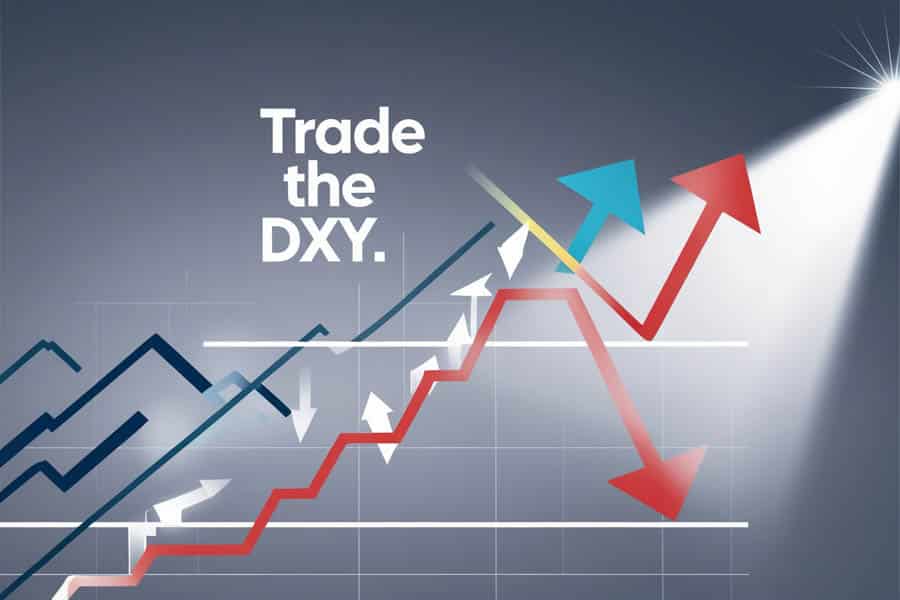
For individuals and institutions seeking direct exposure to the fluctuations of the U.S. dollar’s value, trading the DXY Index offers a direct avenue. The most common methods for trading the index involve futures and options contracts, which are primarily available on the Intercontinental Exchange (ICE) platform.
Methods for Trading the DXY Index
- DXY Futures Contracts: These standardized contracts obligate the holder to either buy or sell the DXY Index at a predetermined price on a specified future date. The most actively traded DXY futures contract typically carries the ticker symbol DX. These contracts provide a way to speculate on the future direction of the dollar’s strength.
- DXY Options Contracts: Options contracts on the DXY Index grant the holder the right, but not the obligation, to buy or sell the index at a specific price (the strike price) before a certain expiration date. Options offer more flexibility and can be used for a variety of trading strategies, including hedging existing positions or speculating on price volatility.
The trading hours for DXY futures generally align with the trading hours of the underlying currency markets, offering near-continuous trading opportunities for participants around the globe. The specific contract specifications, such as the contract size, minimum price fluctuation (tick size), and margin requirements, are standardized by the exchange. Before venturing into trading the DXY Index, it is paramount to partner with a reputable and regulated forex broker that provides access to these instruments and offers the necessary trading tools and resources.
Read More: Stock Market and Forex Relationship
Analyzing Market Sentiment: Recent Trends and Analysis of the DXY Index
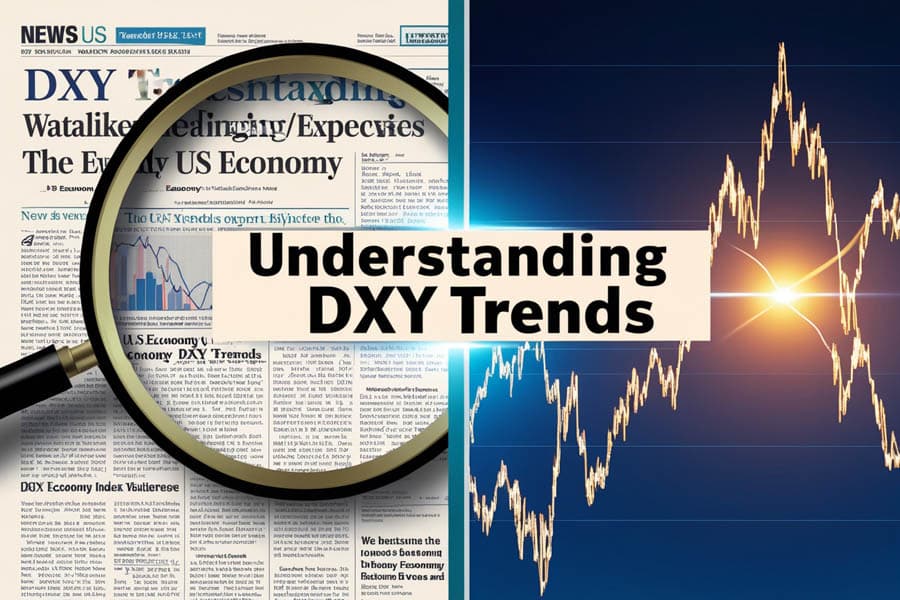
The DXY Index is a constantly evolving metric, influenced by a complex interplay of global economic and political forces. Therefore, understanding recent trends and the underlying factors driving these movements is crucial for anyone seeking to interpret its signals effectively.
Factors Influencing Recent DXY Index Trends
- Divergent Interest Rate Policies: Changes in interest rates set by the U.S. Federal Reserve in comparison to other major central banks exert a significant influence on currency valuations. Generally, higher interest rates in the U.S. tend to attract foreign investment, increasing demand for the dollar and thereby pushing the DXY Index upwards. Conversely, lower interest rates can make the dollar less attractive.
- Global Geopolitical Events and Uncertainty: Periods of heightened global political or economic uncertainty often trigger a “flight to safety,” where investors seek refuge in perceived safe-haven assets, including the U.S. dollar. This increased demand for the dollar can lead to a strengthening and a rise in the DXY Index.
- Releases of Key Economic Data: Significant U.S. economic data releases, such as inflation reports, employment figures, and Gross Domestic Product (GDP) growth announcements, can have a substantial impact on the perceived strength of the U.S. economy. Stronger-than-expected data often reinforces the dollar’s value and can lead to an increase in the DXY.
- Shifting Global Economic Outlook: The overall health and prospects of the global economy also play a role in influencing the DXY Index. During periods of strong global economic growth and increased risk appetite, investors may be more inclined to invest in higher-yielding assets outside of the U.S., potentially leading to a weakening of the dollar and a decline in the DXY.
Analyzing these ongoing trends and their potential future impact requires a careful and comprehensive consideration of various macroeconomic factors, geopolitical developments, and central bank policies.
Pro Tips for Advanced Traders: Elevating Your DXY Strategy
Experienced traders looking to enhance their understanding and trading strategies related to the DXY Index can benefit from employing more advanced techniques:
Advanced Strategies for Trading the DXY Index
- Mastering Correlation Analysis: Develop a deep understanding of the strong correlations, both positive and negative, between the DXY Index and other asset classes. For instance, there’s often an inverse relationship between the DXY and the price of gold, as well as currency pairs like EUR/USD. A rising DXY frequently corresponds with falling gold prices and a weakening Euro against the dollar.
- Identifying Divergence Trading Opportunities: Look for instances where the DXY Index is moving in one direction, while key USD currency pairs are exhibiting signs of moving in the opposite direction. This divergence can sometimes signal potential trend reversals in the near future.
- Leveraging Intermarket Analysis: Enhance your analysis by combining insights from the DXY Index with other key market indicators, such as U.S. Treasury bond yields, commodity prices (especially oil), and major stock indices. This holistic approach can provide a more comprehensive view of market sentiment and potential future price movements.
- Strategic Use of Options: Employ sophisticated options strategies, such as straddles or strangles, to capitalize on anticipated volatility in the DXY Index, regardless of the anticipated direction of the price movement. These strategies can be particularly useful around major economic news releases.
- Navigating News Event Trading: Stay informed about major economic news announcements, central bank meetings, and geopolitical events that have the potential to significantly impact the DXY Index and related currency pairs. Develop a well-defined strategy for trading around these high-impact events, understanding the potential for increased volatility.
Opofinance Services: Empowering Your Trading Journey
Are you searching for a trustworthy and innovative platform to engage with the financial markets? Opofinance, a reputable ASIC-regulated broker, offers a comprehensive suite of services meticulously designed to empower traders at all levels of experience.
Why Choose Opofinance?
- Stringent ASIC Regulation: Trade with confidence and peace of mind knowing that Opofinance adheres to the rigorous regulatory standards set forth by the Australian Securities and Investments Commission (ASIC), ensuring a secure and transparent trading environment for all clients.
- Harness the Power of Social Trading: Connect with, learn from, and even replicate the trades of experienced and successful traders through Opofinance’s intuitive social trading features. This can be a valuable tool for both novice and seasoned traders looking to enhance their strategies and knowledge.
- Access the Industry-Leading MT5 Platform: Benefit from the advanced charting tools, technical indicators, and automated trading capabilities offered by the globally recognized MetaTrader 5 (MT5) platform. Opofinance is officially featured on the MT5 brokers list, a testament to its commitment to providing cutting-edge technology.
- Enjoy Safe and Convenient Fund Management: Experience seamless and secure transactions with a variety of convenient deposit and withdrawal methods, making the management of your trading capital efficient and hassle-free.

Ready to explore the world of trading with a trusted partner? Discover the advantages of trading with Opofinance today!
Conclusion: Recognizing the Enduring Power of the DXY Index
The DXY Index remains a cornerstone of the global financial system. It provides an essential and widely recognized measure of the U.S. dollar’s international value, influencing a vast array of financial activities, from the intricate strategies of forex traders to the broad strokes of international trade. A thorough understanding of its historical context, its specific composition, and the methodology behind its calculation is indispensable for anyone seeking to navigate the complexities of modern financial markets. By diligently monitoring the DXY Index, investors, businesses, and policymakers can gain invaluable insights into the strength of the world’s reserve currency and its far-reaching economic implications.
Key Takeaways: Your Essential DXY Index Summary
- The DXY Index is the leading benchmark for measuring the international value of the U.S. dollar against six major currencies.
- Understanding its DXY Index components and their weightings is crucial for interpreting its movements.
- The DXY Index calculation involves a weighted geometric average of exchange rates.
- The DXY Index is a vital tool for what is dxy in forex trading, global trade analysis, and economic monitoring.
- Trading the DXY Index is possible through futures and options contracts.
How frequently is the DXY Index calculated and updated throughout the trading day?
The DXY Index is calculated and updated virtually in real-time throughout the trading day, reflecting the continuous fluctuations in the exchange rates of the underlying currencies. You can typically find up-to-the-second values from reputable financial data providers, charting platforms, and brokerage services.
Can the DXY Index be used as a standalone predictor of future exchange rate movements with complete accuracy?
While the DXY Index offers valuable insights into the overall trend of the U.S. dollar’s strength, it’s crucial to understand that it is not a perfect or guaranteed predictor of future exchange rate movements. Numerous other economic, political, and market factors can influence currency values, and relying solely on the DXY for forecasting can be risky. It’s best utilized in conjunction with other forms of technical and fundamental analysis for a more comprehensive assessment.
Are there any significant limitations or drawbacks to using the DXY Index as a primary measure of overall dollar strength in today’s globalized economy?
One notable limitation is that the DXY Index’s basket only includes six currencies. While these are undeniably important, it doesn’t capture the dollar’s performance against a broader range of global currencies, including those from rapidly growing emerging markets. Additionally, while the weighting methodology has been adjusted over time, some argue that the fixed weightings might not perfectly reflect the constantly evolving dynamics of current global trade and economic relationships.







